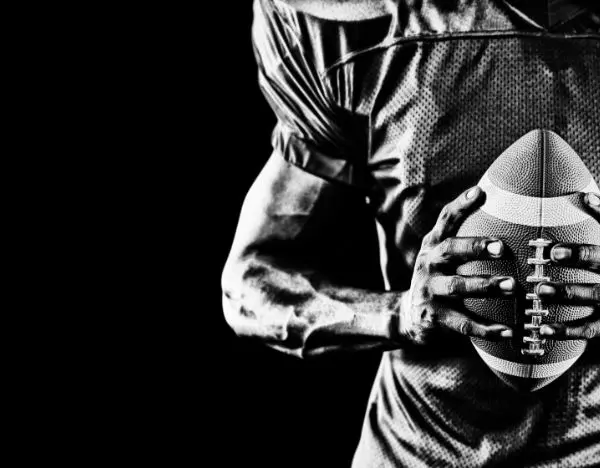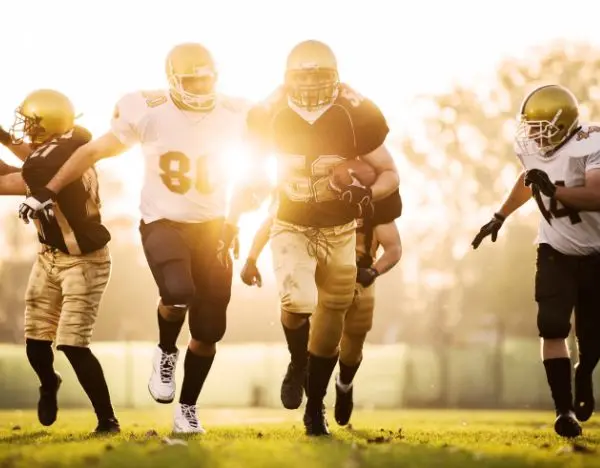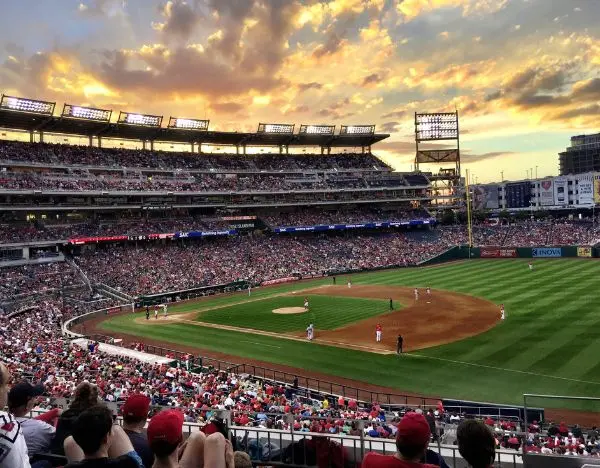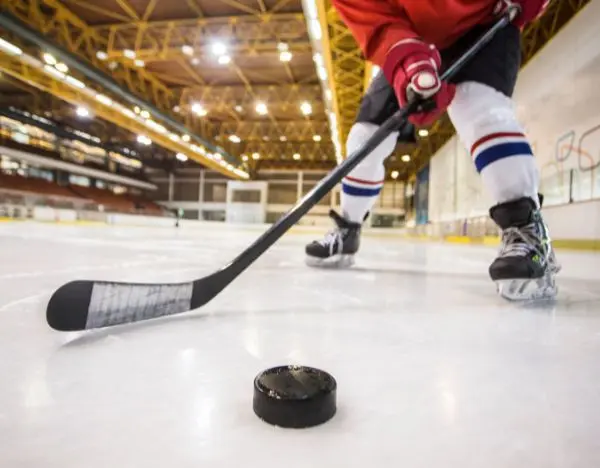Sports are integral to our community and personal lives, providing entertainment and promoting physical health and teamwork. However, sports activities can sometimes lead to injuries, some of which have serious long-term consequences. At Mark Bloom Law, located in El Segundo, CA, we have experience in representing clients who have suffered sports-related injuries. Whether you’re a professional athlete, a student, a sports fan, or a youth participant, we understand the unique challenges these cases present and are here to help. Contact us today for immediate assistance.
Injured? Don’t Pay a Dime Unless We Win.
Hurt because of someone else’s mistake? Get a FREE CONSULTATION with Bloom Injury Law. You pay nothing unless we win.
Call (310) 525-5985 or contact us online to get started now.

A sports injury is any type of injury that occurs during participation in any form of physical activity or sport. These injuries can vary widely in severity, from minor strains and sprains to more serious injuries such as fractures, joint injuries, and concussions. Sports injuries can affect athletes of all levels, from professionals to amateur participants, including children and teenagers involved in youth sports. Here’s a breakdown of what typically constitutes a sports injury:
Brain injuries can be devastating, affecting every aspect of a person’s life. Our sports injury lawyers provide experienced legal services for athletes who have suffered concussions and other types of traumatic brain injuries, whether in the NFL, school sports, or community leagues.
Attending a sporting event should be fun and safe. If you’ve been injured as a spectator—whether due to inadequate security, faulty equipment, or another cause—we can help you seek compensation.
Our sports injury lawyers represent athletes of all levels injured due to negligence, such as unsafe playing conditions, inadequate coaching, or defective equipment. We aim to ensure you receive the necessary support for your recovery and long-term care needs.
The American Youth Soccer Organization (AYSO) and other youth sports leagues are wonderful for children’s development, but injuries can happen. We are skilled in handling cases involving young athletes, ensuring their rights and futures are protected.
The severity and frequency of concussions in football, especially at the professional level, have drawn significant legal attention. We are equipped to handle the complexities of NFL-related concussion cases, advocating for former and current players’ rights.
Being a mascot is physically demanding and can lead to unexpected injuries. If you or someone you know has been injured while performing as a mascot, we can assist in navigating the legal aspects to secure compensation for injuries and other damages.
At Mark Bloom Law, we understand the physical, emotional, and financial toll that a sports injury can impose on athletes and their families. Whether you’re a professional athlete, an enthusiastic amateur, or a supportive parent of a young sports enthusiast, our experienced personal injury lawyers are here to help you navigate the complex landscape of sports injury law. Here’s how an experienced sports injury lawyer can assist:
Sports injury claims can be intricate due to the specific legal doctrines involved, such as the assumption of risk and comparative negligence. Our skilled sports injury lawyers deeply understand these doctrines and how they apply in various contexts, from school sports to professional leagues. We provide you with clear, informed guidance on the viability of your claim and the best legal strategies to pursue.
We conduct a comprehensive investigation into the circumstances surrounding your injury. This involves gathering evidence such as witness statements, medical records, and expert testimony. Our meticulous approach ensures that every aspect of your case is thoroughly prepared, from establishing negligence to demonstrating the impact of the injury on your life.
Dealing with insurance companies can be daunting and complex. Our attorneys have extensive experience negotiating with insurers. Our sports injury lawyers strive to ensure that you receive the maximum compensation available, handling all communications and negotiations on your behalf to shield you from any tactics that might undermine your claim.
Our primary goal is to secure the best possible outcome for you. This includes compensation for medical expenses, lost wages, pain and suffering, and any future rehabilitation or long-term care costs. We work tirelessly to ensure that all potential avenues for compensation are explored and leveraged in your favor.
While many sports injury claims are settled out of court, some require a trial to achieve fair compensation. Our El Segundo sports injury lawyers are seasoned litigators with a strong track record in court. We are prepared to take your case to trial, using persuasive arguments and robust evidence to advocate for your interests.
We believe that effective legal representation is not just about technical legal excellence but also about understanding and addressing the individual needs of our clients. Your sports injury lawyer will listen to your concerns, explain legal terms in plain language, and keep you informed throughout the legal process. Our approach is tailored to provide the emotional support and the legal experience you need during this challenging time.
We offer our services on a contingency fee basis, which means you owe us nothing unless we win your case. This arrangement allows you to pursue justice and compensation without worrying about immediate legal fees.
Determining whether you have a viable sports injury case in El Segundo, CA, involves understanding several key legal elements. Here’s a step-by-step guide to help you assess if you might have a sports injury case:
To have a sports injury case, your injury must have been caused by someone else’s negligence or an intentional act. Consider these questions:
For a sports injury claim to be successful, you must prove negligence. This involves showing:
In sports, especially in contact sports, there is a legal concept known as “assumption of risk.” Participants are often considered to have assumed the risk of certain injuries inherent to the sport. However, the assumption of risk does not cover all injuries, especially those resulting from negligence that goes beyond the normal scope of the sport.
Solid documentation can significantly strengthen your case. This includes:
In California, you generally have two years from the date of the injury to file a personal injury lawsuit. It’s crucial to consider this timeframe when planning your legal actions.
At Mark Bloom Law, we are committed to providing top-notch legal representation to individuals who have sustained injuries while participating in sports activities. Our El Segundo, CA, personal injury law firm has extensive experience handling various sports injury cases. Whether the injury occurred due to equipment malfunction, negligence, or inadequate medical care, our dedicated team is here to help. Below are the types of sports injury cases we typically handle:
Injuries resulting from artificial turf, such as burns, abrasions, or more severe impact injuries due to the hardness of the surface, can lead to claims if the turf is improperly installed or maintained.
We handle cases involving head injuries from sports activities, focusing on the long-term care needs and the impact on quality of life for the victims of concussions and other traumatic brain injuries.
Injuries that occur without physical contact with other players are often the result of poor training practices, inadequate safety protocols, or defective equipment.
These injuries can severely impact an athlete’s ability to perform and lead to chronic pain. Our firm advocates for victims to ensure they receive compensation for their medical treatment and any long-term disability.
These devastating injuries require significant legal experience to ensure that all aspects of the victim’s future care, lifestyle adjustments, and financial needs are addressed.
Such injuries can end careers and significantly alter life quality. Our firm seeks compensation for all medical interventions and long-term impacts of these injuries.
We represent clients suffering from herniated discs, spinal fractures, and other back injuries that often require extensive physical therapy and can lead to permanent disability.
Common in many sports, these knee injuries can sideline athletes and require surgery and lengthy rehabilitation.
We handle cases involving broken bones and dislocated joints, ensuring our clients receive compensation for their immediate and ongoing medical needs.
When sports injuries are improperly managed or mistreated, leading to worse outcomes or additional harm, our attorneys step in to hold responsible parties accountable.
We pursue claims against manufacturers and distributors of sports equipment that fails and causes injury. This includes everything from defective helmets to faulty gym equipment.
We assist professional athletes in navigating workers’ compensation claims to secure their rights and benefits when injured on the job.
In the tragic event of a fatal sports injury, we provide compassionate and determined representation to the families of the deceased, seeking justice and compensation for their loss.

Participation in NCAA and college sports is a pivotal part of many students’ college experiences, offering opportunities for personal growth, team building, and even career development. However, college sports’ physical demands and competitive nature can sometimes lead to serious injuries. At Mark Bloom Law, we have experience in representing athletes who have suffered injuries while participating in NCAA and other collegiate sports programs. Here’s how we can assist and what you need to know about your legal rights and options.
College athletes can face a wide range of injuries, including, but not limited to:
Determining liability in NCAA and college sports injuries can be complex. The key factors often involve:
Football is thrilling, but its intense physical demands can lead to serious injuries, especially at the professional level like the NFL. At Mark Bloom Law, we understand the unique challenges football players face when injured, both during games and in practices. Our sports injury lawyers are dedicated to providing legal assistance to players who suffer from injuries due to negligence, unsafe practices, or faulty equipment.
Football players can experience a variety of injuries due to the high-contact nature of the sport, including:
The legal landscape for football injuries, particularly in the NFL, involves several complex elements:
Concussions in football are serious traumatic brain injuries resulting from impacts to the head or body that cause the brain to move rapidly within the skull. Symptoms can range from headaches and confusion to temporary loss of consciousness. The condition requires immediate medical attention and careful management to prevent long-term consequences. Legal considerations also arise, particularly around ensuring adequate safety measures and addressing any negligence in safety protocols. Concussions remain a significant issue at all levels of football, emphasizing the need for ongoing education, improved equipment, and adherence to safety guidelines.

Baseball, while less contact-intensive than sports like football, still poses significant injury risks to players at all levels, including Major League Baseball (MLB). Baseball injuries can range from acute traumas like fractures and sprains to chronic issues stemming from the sport’s repetitive nature. Players and organizations must understand these injuries, their implications, and their legal considerations.
Injured? Better Call Bloom!
If you've experienced a sports injury, contact Bloom Injury Law today for a free consultation. Call (310) 525-5985 or contact us online.
Injuries in baseball often result from the mechanics of pitching, batting, and fielding and include:
Legal issues in MLB and baseball injuries typically revolve around:
Players facing injuries require comprehensive strategies to address their immediate medical needs and long-term career considerations. Legal representation is crucial to navigating the complexities of contract negotiations, liability issues, and potential compensation claims. Teams and leagues must also proactively manage risk by implementing rigorous safety protocols and prioritizing all player health and safety aspects.
For players in MLB and other baseball leagues, obtaining skilled legal and medical advice is essential to effectively manage injuries and ensure appropriate measures to safeguard their careers and personal well-being.

Hockey is a high-speed, physically demanding sport that inherently risks injury. In the National Hockey League (NHL) and across all levels of ice hockey, players face a wide range of injuries from the game’s wear and tear. Addressing these injuries involves appropriate medical care and understanding the legal implications of player safety and liability.
Due to the physical nature of hockey, including frequent body checks and the hard, icy surface, injuries can be severe. Some of the most common include:
Legal issues in hockey often involve several key aspects:
For players experiencing an injury, immediate and appropriate medical treatment is crucial. Additionally, understanding one’s legal rights and options is essential. Players should consider:
Professional hockey players, coaches, and teams must prioritize safety and be aware of the legal responsibilities and potential liabilities associated with the sport. Effective management of injuries helps protect player health and safeguard all parties’ legal and professional interests.
Basketball is a high-intensity sport involving quick pivots, aggressive rebounds, and constant jumping, naturally putting players at risk for various injuries. In the National Basketball Association (NBA) and throughout the sport, understanding the types of injuries and their legal implications is crucial for players, coaches, and teams.
Basketball players face a range of injuries that can affect their performance and careers. Some of the most common injuries include:
The legal aspects surrounding basketball injuries primarily involve:
For players who suffer an injury, several steps should be followed to ensure proper care and legal protection:
Effective management of basketball injuries requires a coordinated approach that includes medical care, legal advice, and personal attention to recovery. Whether it’s a minor sprain or a career-threatening injury, understanding the legal rights and medical options can significantly improve the outcomes for NBA players and other basketball athletes.
Soccer is a global sport known for its speed, endurance, and physicality. Despite being less contact-oriented than sports like football or hockey, soccer players are still highly susceptible to various injuries. In Major League Soccer (MLS) and across all levels of the sport, understanding these injuries, their potential impact on careers, and the legal nuances involved is crucial for players, coaches, and clubs.
Soccer players can face a range of injuries, largely due to running, player collisions, and the ball’s impact. Some of the most common injuries include:
The handling of soccer injuries involves several legal aspects that teams and players need to navigate:
Proper management of soccer injuries not only focuses on immediate and effective medical treatment but also on understanding the legal rights and options:
Soccer players, from the youth to the professional levels, must be aware of the risks involved and the legal implications of their sport. Effective injury management involves a comprehensive approach that addresses both the physical recovery and the potential legal ramifications of soccer injuries. Whether you’re a player, coach, or club official, staying informed and prepared can help mitigate the impact of injuries and ensure the well-being of all involved.
In a sports injury lawsuit, determining liability can be complex as multiple parties might be involved, depending on the circumstances of the injury. Understanding who might be held liable is essential for pursuing a legal claim effectively. Here are some of the common parties that can be held liable in a sports injury lawsuit:
Coaches and trainers have a duty to ensure that athletes are properly prepared, trained, and informed about the risks involved in the sport. They must also ensure that athletes are not pushed beyond safe limits and that any medical concerns are appropriately addressed. Liability might arise if a coach or trainer has been negligent in these duties, leading to an injury.
Owners and operators of sports facilities are responsible for maintaining a safe environment. This includes ensuring that the playing surfaces are safe, equipment is in good repair, and all safety measures are in place (like adequate lighting and secure premises). If an injury is caused by unsafe conditions or poor maintenance, the facility or venue owner can be held liable.
In cases where sports injuries occur at school or during school-sponsored events, the institution itself may be liable. This liability can stem from negligent supervision, inadequate training of coaching staff, or failure to provide a safe playing environment.
If a sports injury is caused by defective or dangerous equipment, the manufacturer can be sued for product liability. This includes faulty helmets, protective gear, or any sports-related equipment that fails and leads to injury.
Organizers of sports events have a duty to ensure that the event is conducted safely. This includes hiring competent officials, providing adequate medical assistance, and following all safety protocols. If an injury results from a failure in any of these areas, the event organizers can be held responsible.
In some sports, especially contact sports, injuries can occur due to the actions of other players. If another player’s actions were reckless or intentionally harmful beyond the normal scope of the game, that player could potentially be held liable for injuries caused.
Sometimes, sports injuries are exacerbated by inadequate medical care provided immediately after the incident or during subsequent treatments. If medical personnel fail to diagnose or treat an injury correctly, leading to worsened conditions, they could be held liable under medical malpractice claims.
Determining liability often involves understanding the relationships between the parties involved, the contractual obligations (if any), and the specific circumstances of the injury. In sports law, issues such as consent to risk, the assumption of risk by the injured party, and comparative negligence (where responsibility may be shared among different parties) also play significant roles in determining liability.
Consulting with an El Segundo sports injury lawyer is crucial if you believe you have a sports injury claim. They can help you navigate the complexities of the law, identify all potentially liable parties, and work to ensure that you receive appropriate compensation for your injuries.
Sport injury victims may be entitled to various forms of financial compensation to address their injuries’ physical, emotional, and financial toll. The specific types of compensation can vary depending on the circumstances of the injury, applicable laws, and the extent of the damages suffered. Here are some common forms of financial compensation sport injury victims may pursue:
Sport injury victims need to consult with an experienced personal injury attorney to assess their case’s specific circumstances and determine the types of compensation available to them. An El Segundo sports injury attorney can help victims understand their legal rights, navigate the claims process, and advocate for fair compensation for their injuries and losses.
Don’t wait to seek the compensation you deserve for your sports-related injury. Contact us now to speak with an experienced personal injury attorney who can guide you through the legal process and fight for the compensation you need to recover and move forward with your life. Your rights matter, and we’re here to help you protect them. Schedule your consultation today.
Injured? Better Call Bloom!
If you've experienced a sports injury, contact Bloom Injury Law today for a free consultation. Call (310) 525-5985 or contact us online.